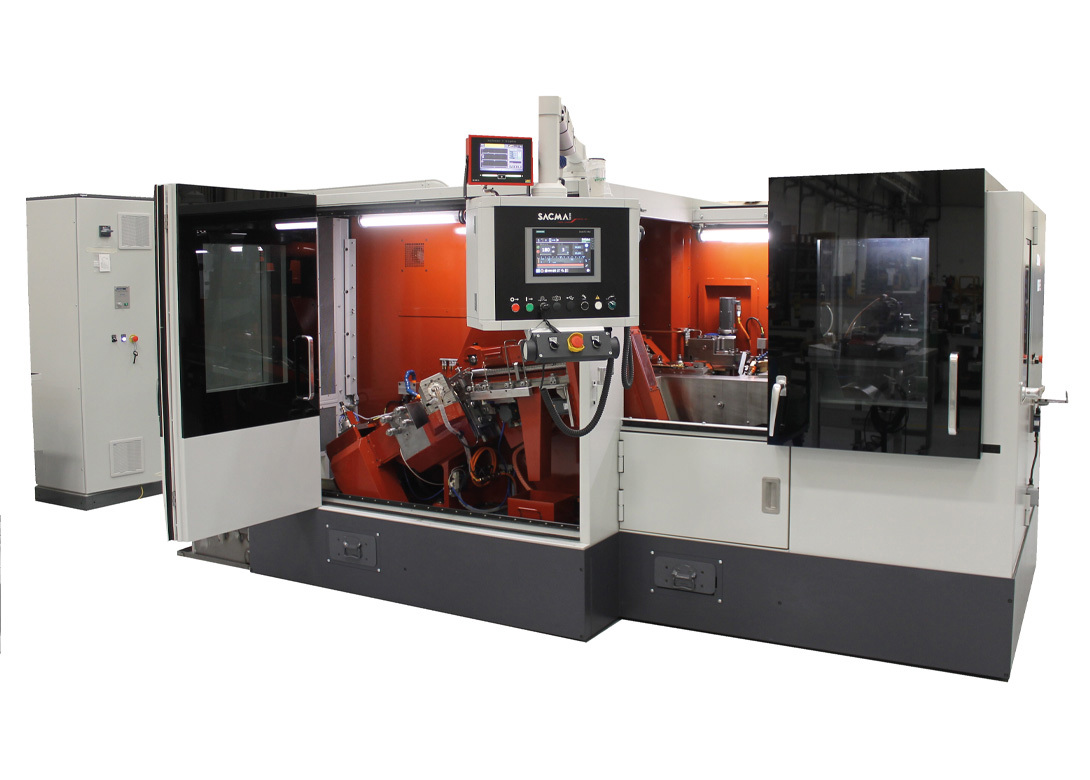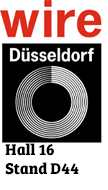
By Ing Enrico Brigatti, chief commercial officer, SACMA Group
Today the variety and the quantity of metal fasteners produced by cold forming of wire rod is impressive. Almost all screws, bolts, and nuts, are made with that technology, but it’s not just these products. The name of the process evokes itself with the capacity to form a lot of special parts, solid or hollow, with a complex shape, to be used in the most important industry fields, automotive first.
Cold forming is not the simple heading of its debut in the early 1950s, it now involves more sophisticated multiple die presses, dedicated materials, accurate tooling, and it has become possible to produce parts that only a few decades ago no one could imagine obtaining from wire.
If we add the advantages coming from a high productivity, optimal use of raw material, as well as consistency of precision, the success and the spread of this technology appears logical and motivated.
There is another important point in favour, especially these days, and that is the topic of sustainability – with cold forming only requiring a modest energy intake and having a minimal scrap rate. At SACMA, we are always working to build, in a sustainable way, sustainable machines for the most sustainable technology. To do that, we chose solutions requiring low energy consumption; we increase our own production of renewable energy; and we select our supply chain accordingly.
The core activity of SACMA Group is to design and build machinery for the cold forming process – a complete line of presses and rollers to fulfil the needs of the modern industry, including ancillary equipment and machines for secondary operations.
Our mission is to offer to the producers of cold formed parts the best possible equipment with effective solutions, keeping at the same time the well known robustness and reliability of SACMA machines.
Innovative solutions
Looking to the most innovative solutions recently introduced, I would like to start with the mechatronics application. In our machines there are more and more functions activated by servomotors: Wire feeder, stock gauge, die kick out, transfer, starter, etc. The purpose is to make the set-up of the machines easier, intuitive, and quicker, with more safety for the operator – because reducing their manual interventions allows us to activate and control the operations directly by HMI. We started to introduce those functions in the bigger sizes of presses, where the advantage for the operators is more consistent, and gradually we are also implementing in the small machines.
Ever focusing on the user’s needs, and the work environment, we have also redesigned the machine cabins, integrating inside them all the items, such as the main motor and the lubrication unit, which were previously external. The result of this activity is a more compact machine, less floor consuming and emitting a lower noise level. Also, any oil dropping is eliminated, helping to keep the work room clean and healthy. We have also improved the ergonomics with more comfortable doors and internal spaces for the interventions. The action plan is already in progress, with the target to fit all the machine models within the next year.
Coming now to functions more connected with cold forming, SACMA continues to develop and propose solutions with a scope to enlarge the potential of this technology. It’s known that complicated parts, made with alloyed steels, cannot be formed in one shot, even through more forming stations. The material, stressed by a too high deformation rate, starts to crack. To avoid that, you must proceed with an intermediate heat treatment to regenerate the metallographic structure. The production process then becomes articulated and involves more machines.
That is why SACMA has introduced re-feeding equipment, allowing the operator to apply the two steps process in the same machine, at the same time. Another solution for extended deformation sequences is the device for feeding pre-formed parts in the cut off station. By having a 6 die press, it should be possible to execute a deformation in 12 steps, with an annealing/coating operation in between, all done starting from a standard machine.
Warm forming technology
To extend the borders of cold forming, SACMA is constantly involved in improving its own warm forming (WF) machines. This warm forming technology is very near to cold forming – the same base machines and same concept of tools – it is only the special equipment for making them suitable to work at temperature and helping enlarge the deformability of difficult materials, such as stainless steels, titanium alloys and nickel superalloys that is different.
SACMA recently presented a complete line of WF part formers, split into different models according to the operating temperature – WF300, WF500, and WF900 – which can work respectively up to 300°C, up to 500°C and up to 900°C, based on the parts and the materials to be produced. The program predicts all the machines sizes and, thanks to the SACMA Modular Design Concept, all the machine models could be involved. Also, Ingramatic offers a complete line of WF rollers, for instance for threading aerospace fasteners.
An interesting function that can be integrated in all our machines is the thermoregulation of the die box and the cooling oil tank. When the tolerances of the part become tight, a stable temperature of tools and coolant is the priority. The TR unit is positioned nearby the machine, to heat up the die box and the oil at machine start. Afterwards, during the production, it cools down, keeping them inside the desired range of temperature. Thermoregulation means precision and consistent reduction of NC parts. That function can be implemented in the WF machines, and it is effective for the cold formers too.
Combined machines
The combined machines have been a key product for SACMA since the first one, an SP27 that is still active at an Italian customer, left the Limbiate factory in 1974. The machines are an ‘all in one’ production centre that includes forming, pointing and thread rolling. At SACMA we ensure they have a compact layout, feature quick ‘plug in’ and include high efficiency and energy recovering. These are some of the most effective and sustainable solutions to produce threaded fasteners and are suitable for products in the range from M3 to M24. We are also constantly innovating and improving them through our engineers – focusing on ease of use, quick tool changeover and energy consumption.
For instance, already within the SACMA portfolio we have the SP59, in two versions – normal and short stroke. This is a 6 die combined press, extending the range of products to the more complicated special parts. We are also planning on introducing the SP39 and after that the SP29. Considering the WF equipment available, the flexibility in terms of feasible products from SACMA is without comparison.
Also on the subject of combined machines, SACMA is proposing the new KSP12, a fully redesigned successor of the iconic KSP11 – a one die two blow header with thread rolling, suitable for production of screws, self-tapping and metric, from diameter 3mm to 8mm. The machine was enthusiastically accepted by our loyal existing customers and by new customers too. The world preview occurred during the last wire® Düsseldorf shows, and the next step is to present a new version for ultra-short and small head screws.
Extra key services
Being aware that the best machines for high performance also need the best tools, SACMA has recently introduced for its customers the S-Tooling division. For this, in a structural way, we have created a department, where skilled and experienced engineers develop and design the tools for new complex parts requested by the market. They are supported by the most up to date and innovative instruments for the FEM simulation, to issue the perfect deformation sequence and the construction drawings of each tool. The successful feedback we are receiving from our customers is encouraging us to increase the capacity of this department with new hardware and resources.
Another theme dear to us is the service after market, including technical assistance and spare parts, which help keep the machines always in the best condition. Our products are designed and built to be durable and our customers are expecting a long productive life. The availability of spares, even for machines born 40 years ago and more, is crucial. That is why we are prepared with a large inventory in our warehouse of parts, ready to be delivered – minimsing machine downtimes. All our branches and agencies, beyond the commercial activity, can give technical assistance. In the Limbiate headquarters we are also boosting up the service with young resources and new structures.
To fulfil the requirements of Industry 4.0, SACMA can also offer different packages to implement the machine data, at increasing levels, inside the network of the customer. Moreover, we have started to investigate Artificial Intelligence (AI) fields – how to obtain additional information and how to make quick and useful instructions for the operators when it comes to set-up and ordinary maintenance.
85 years on from its foundation and SACMA Group still strives, day-by-day, to improve with its own innovative products, not only the SACMA presses but also the Ingramatic rollers, as well as the feeding and unloading equipment of Tecno Lift and the tapping and turning machines of HS ASPE. We are always looking to offer our customers from the fasteners and cold forming industry a wider range of machines and services, making them more successful in the global market. Of course, we do that because it’s our business, but especially because of the passion pushing us. We love to build top class machines and we like to see the satisfaction of our customers.
www.sacmagroup.com


Will joined Fastener + Fixing Magazine in 2007 and over the last 15 years has experienced every facet of the fastener sector - interviewing key figures within the industry and visiting leading companies and exhibitions around the globe.
Will manages the content strategy across all platforms and is the guardian for the high editorial standards that the Magazine is renowned.
Don't have an account? Sign Up
Signing up to Fastener + Fixing Magazine enables you to manage your account details.